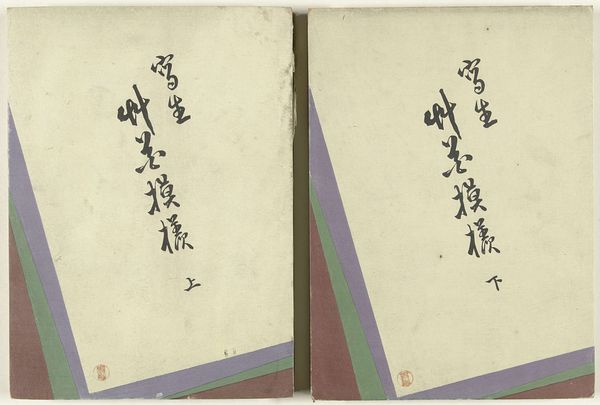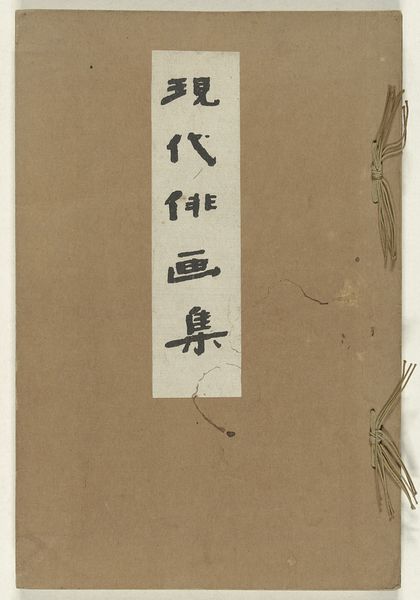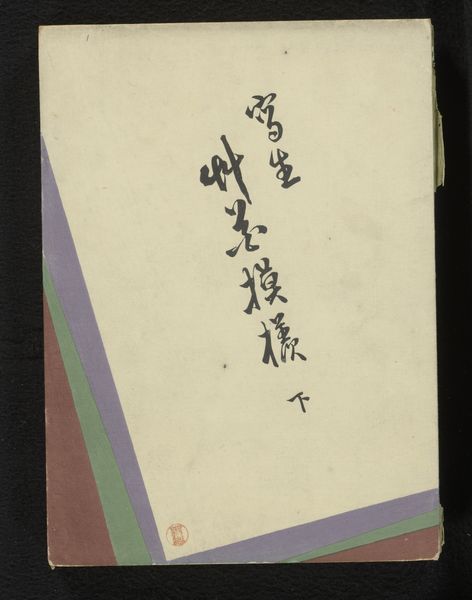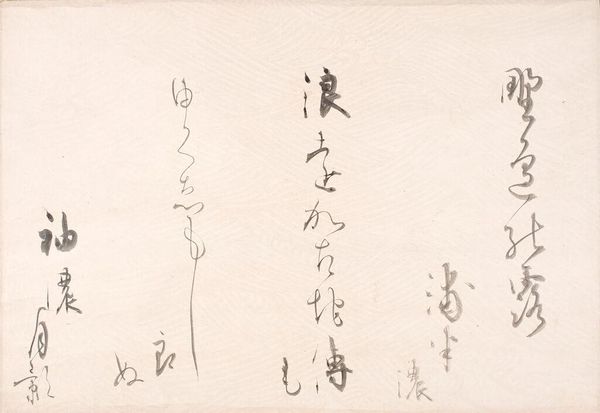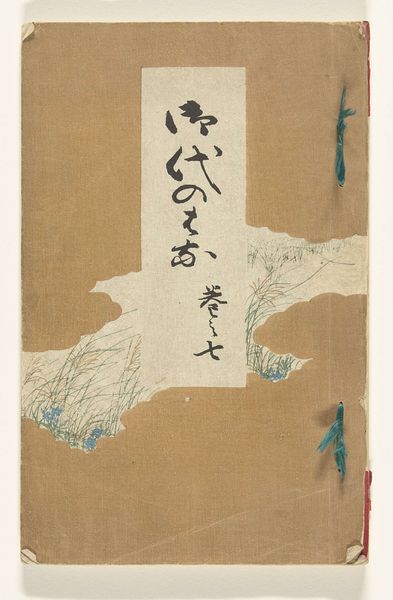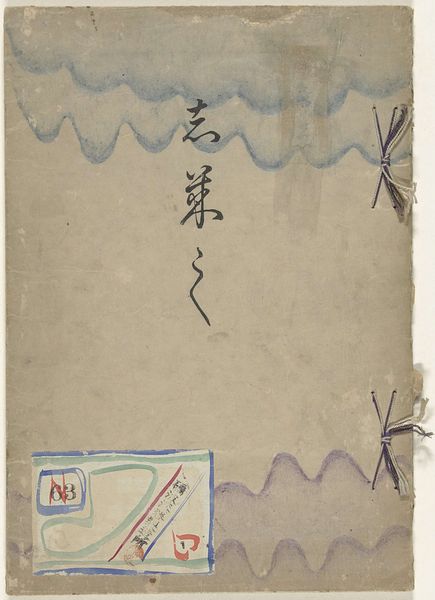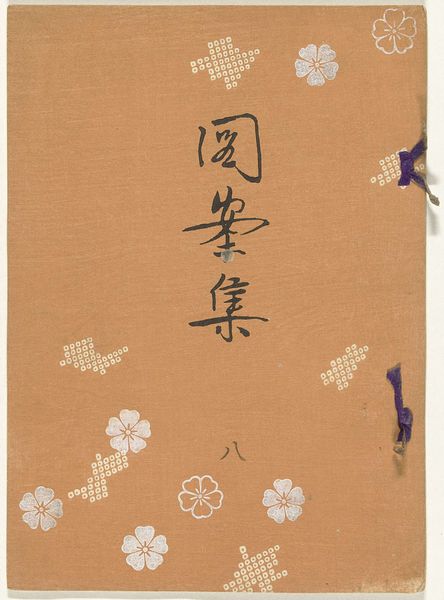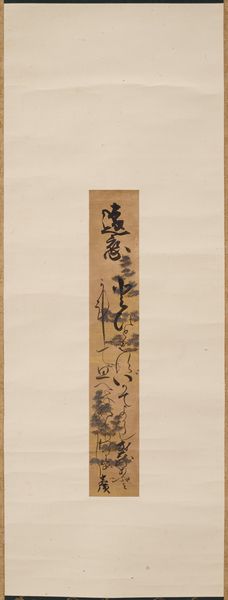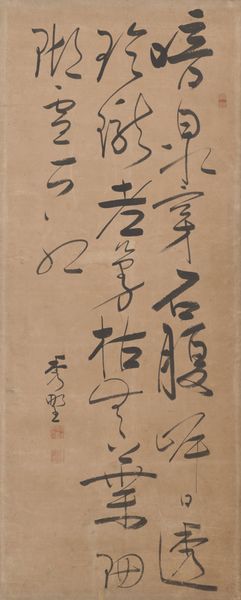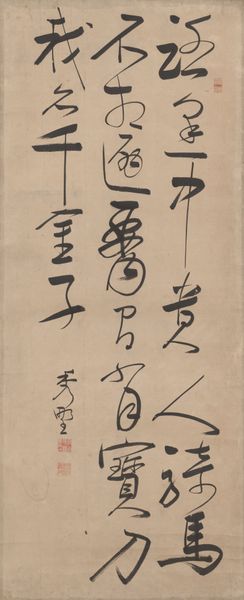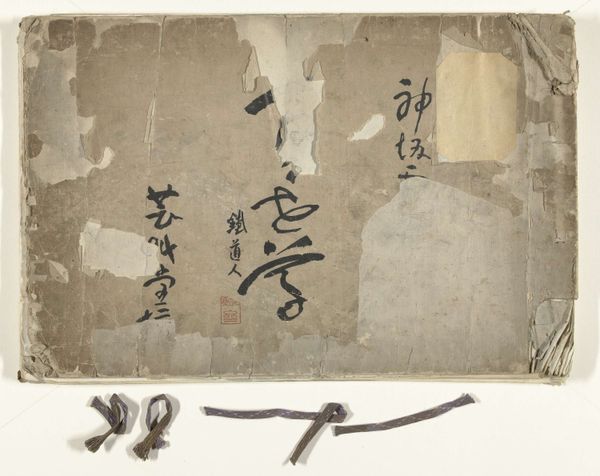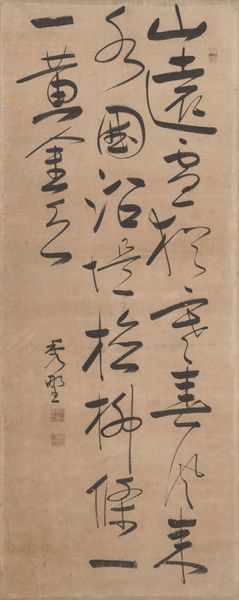
drawing, paper, ink
#
drawing
#
asian-art
#
paper
#
personal sketchbook
#
ink
#
geometric
#
ink colored
#
sketchbook drawing
#
watercolour bleed
#
watercolour illustration
#
calligraphy
Dimensions: height 249 mm, width 161 mm
Copyright: Rijks Museum: Open Domain
Editor: This is Morikawa Sobun's "Wereld der Kunsten - 22," created in 1892, using ink and paper. The stylized script gives it a striking, almost graphic quality. How do you interpret this work, beyond just its aesthetic appeal? Curator: I see it as a powerful statement on the globalization of artistic expression in the late 19th century. Think about the context: Japan was rapidly modernizing, engaging with Western ideas while also asserting its own cultural identity. This work, with its blend of traditional calligraphy and a seemingly modern sensibility, could be interpreted as a negotiation of these cross-cultural influences. Who gets to define "art" and "beauty" within the context of imperialism and cultural exchange? Editor: So you're suggesting it's more than just a drawing; it's a commentary on the era's power dynamics? Curator: Exactly. The deliberate use of traditional materials like ink and paper, contrasted with what might be perceived as a contemporary composition, can be seen as a form of resistance against cultural homogenization. It’s a visual assertion of Japanese artistic sovereignty in a world increasingly dominated by Western aesthetics. What does this say about the artist's identity? What about its accessibility to local audiences versus the external Western Gaze? Editor: That's fascinating. I hadn't considered the political implications of something that initially seemed purely artistic. The minimalist color scheme becomes much more charged when viewed through that lens. Curator: Precisely! The subtle color choices can now be re-read as intentional nods to specific Japanese artistic traditions that reaffirm and reclaim authorship in the global cultural landscape. It really changes how we look at the work, doesn't it? Editor: It certainly does. I’ll never see Asian art the same way again. Curator: And I’m reminded how crucial historical context is in interpreting any piece, especially in a period of rapid change and intercultural exchange.
Comments
No comments
Be the first to comment and join the conversation on the ultimate creative platform.


